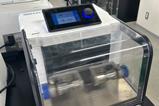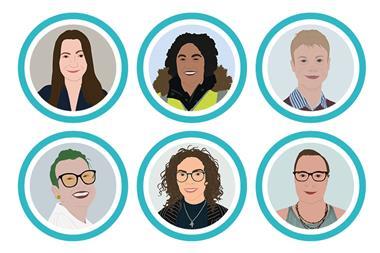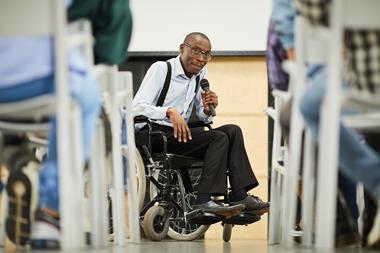Disabled chemists continue to be underrepresented at every stage of both academia and industry within chemistry according to a report released by the Royal Society of Chemistry (RSC) last week. The report is part of a new online disability hub, bringing together all of the RSC’s research and resources on tackling accessibility issues in the sector.
‘We wanted something a bit more agile than a simple PDF report. A dynamic resource that people can dip into and which we can keep updating as we get more data,’ says Emrys Travis, disability and accessibility specialist at the RSC. ‘There are so many different audiences for this kind of work. We hope the hub will signpost people to resources that can help them but also provide recommendations and advice for employers and anyone wanting to improve accessibility.’
The report draws together data from a range of sources to create a full picture of disability within the chemical sciences. Travis’s team analysed results from RSC membership and pay and reward surveys alongside data from the Higher Education Statistics Agency. They combined these analyses with qualitative data gathered from a series of roundtable events which brought together experts with disabilities and leaders in the sector.
The hub’s home page summarises their key findings, most significantly the extent of underrepresentation in the workplace. 23% of working-age adults are disabled in the UK, and while 17% of undergraduates declared a disability in 2022, this drops to just 5.6% for academic staff. Both of these numbers have been rising steadily over the last five years, suggesting positive changes in accessibility across higher education, but Travis stresses the need for caution in drawing generalised conclusions. ‘These underrepresentations at each stage look like they’re improving over time, but when you actually look at the data behind how that breaks down, it’s an incredibly complex picture,’ they explain. ‘We’re seeing these massive increases for mental health conditions and neurodivergence, but for other conditions, especially sensory and mobility impairments, those numbers are staying quite flat.’
The challenge of interpreting these statistics is compounded by the disparity between those who identify as disabled (4%) compared with those who face health-related barriers and meet the legal definition of disabled (10%). Some choose not to share their circumstances for fear of discrimination while many others are simply uncertain of whether their experiences count. ‘Regardless of the reason, this highlights how many people may not be accessing the support they need, or even be aware that they could be entitled to support,’ says Travis.
Intersectionality is another potential factor contributing to this disparity, with white individuals twice as likely to identify as disabled as other racial groups. Without additional context, it’s impossible to draw reliable conclusions from statistics alone, Travis cautions. ‘This is why the qualitative data from members’ lived experiences is so important – these disability statistics are so complicated that we just cannot get a full picture without those perspectives.’
The hub’s findings align with other recent disclosures which have highlighted the ongoing barriers for disabled individuals across the sciences. Disabled Students UK released a report earlier this year revealing that only 1/3 of postgraduate research students felt they received sufficient support to be on an equal footing with their non-disabled peers. A second study from Johns Hopkins University in the US found that disabled Stem PhD graduates went on to earn an average of $10,000 (£7900) less per year than their non-disabled counterparts. The study authors cited underrepresentation and a lack of access to tools, mentors and opportunities as major issues contributing to this pay gap.
‘Chemistry should be welcoming and accessible to everyone, but unfortunately, disabled chemists continue to face stigma, discrimination and structural barriers,’ comments Travis. ‘If more organisations planned with inclusion at the front of their minds, so many of these barriers could be reduced or eliminated altogether.’

















No comments yet